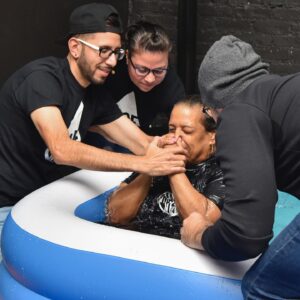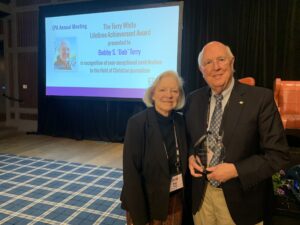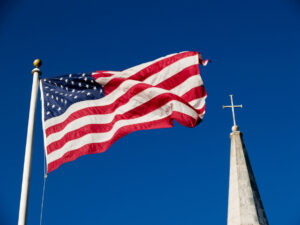
LOS ANGELES (BP)–Southern Baptist Korean churches in the United States are evolving even as they are growing, despite significant cultural challenges and major decreases in immigration over the last two decades.
While most Korean churches still focus on first-generation immigrants, a concerted effort is underway to identify, develop and send out second-generation Koreans to meet the needs of immigrants’ progeny from the last 30 years.
“Our children are different; they’re wired differently,” said Dan Moon, who recently retired after 33 years as a church starting strategist with the SBC’s North American Mission Board and its predecessor, the Home Mission Board.
“The children get the call, but they still have the cultural struggle, and the pastorate is not attractive to the young generation, pretty much a general symptom for the Christian community,” said Gihwang Shin, language strategist in the Puget Sound (Wash.) Baptist Association. “Another challenge is that the Korean pastor has no plan for his retirement. The churches still don’t see the need and the pastor doesn’t see the need.”
In other words, Korean churches in the United States are experiencing the stresses of many other churches, with the additional pressure of being part of a culture that was barely discernible in the United States a half-century ago.
The 1940 census showed fewer than 2,000 Koreans on the U.S. mainland. It was not until Asian immigration restrictions were lifted in 1965 that the number of Koreans entering the nation began to climb. About 268,000 Koreans immigrated during the 1970s and 334,000 in the 1980s.
The trend began spiraling downward in the 1990s, when only about 164,000 Koreans immigrated. Officials predict fewer than 100,000 will immigrate this decade.
A strong economy in South Korea, coupled with concern since the Rodney King riots in 1992 in Los Angeles, turned the immigration tide, Moon said.
The growth of new starts has slowed and become more focused on gateway cities rather than small or mid-sized towns, Shin said. But with fewer than 800 Southern Baptist Korean churches for more than 1.5 million Koreans, there continues to be a need to start churches as well as develop additional ministries for second-generation Koreans, he added.
A key challenge: “We don’t have enough leadership for the next generation, and we don’t have enough people who can bridge the first and second generations,” Shin said. “The third generation will be multigenerational. Until that time there is a need for a bridge to keep the spiritual history, traditions and heritage alive.”
Maintaining spiritual vigor also is a challenge.
Immigrants fresh from Korea in the last 35 years of the 20th century –- even those who had no personal faith –- saw the church as a lifeline to safety, cultural identity and employment, several Korean leaders said. Many of the immigrants were professionals –- doctors, lawyers, accountants and business leaders in Korea. They passed on to their children what they gleaned at the church about education, networking and financial success, and directed their offspring toward American-style success.
Christians emphasized success undergirded by faith and trust in God. But too often, those who were children when they came to the U.S. -– the 1.5 generation -– and those born in the U.S. to immigrants –- the second generation –- did not hear the “undergirded by faith and trust in God” part of lessons given them by their parents and Korean-speaking pastors, several Korean leaders said.
Korean Baptist leaders today are looking to reclaim those who were swallowed by America’s false gods.
“They had very honorable parents but once they go to school they get away from [Christian teachings],” Moon said. “They don’t know lifestyle Christianity; they haven’t felt spiritual ownership.”
The generational gap widens as parents remain locked in the Korean culture they knew when they immigrated, while their growing children become more and more Americanized.
The nation’s largest Korean churches now offer services in English as well as Korean, but some of the smaller churches resist for fear of weakening the culture and widening family chasms in which two languages are spoken and two cultures are lived in the same house, Moon said.
Another problem is that when a church calls a pastor, he’s often from Korea, which makes him the newest first-generation person in the church. A lack of respect for pastoral authority can grow from members who have absorbed more of America than they realize, said Kon Yang, associate professor of Old Testament Studies at Golden Gate Baptist Theological Seminary.
The Council of Korean Southern Baptist Churches in America was formed in 1981 to be an encouragement to pastors far from home who are desperate for fellowship and struggling with church members who know more English and more about American culture, Yang said.
“Pastors in Korea have friends and other ministers they can share with easily and pray together and fellowship with, but in America that is not possible,” Yang said. “It’s a big country and the [Korean] churches are spread out. As their churches grew in numbers, and as the number of congregations grew, they began to realize the Korean way of ministry is not really fitting into the needs of the ministry setting in America, but neither is the American way of ministry not fitting into Korean churches.”
But just as American culture has become embedded in Korean congregations, so has Korean-style Christianity made its ways known in the United States.
“The best thing that could ever happen among Southern Baptists in the last 10 years is the fresh breath Koreans bring in,” Moon said. “While many English-speaking white churches have reached plateaus and feel somewhat at a standstill, Koreans are very much engaged in daybreak prayer, building new facilities and reaching out to different people groups. Korean churches have excelled so much they have become a role model.”
–30–















